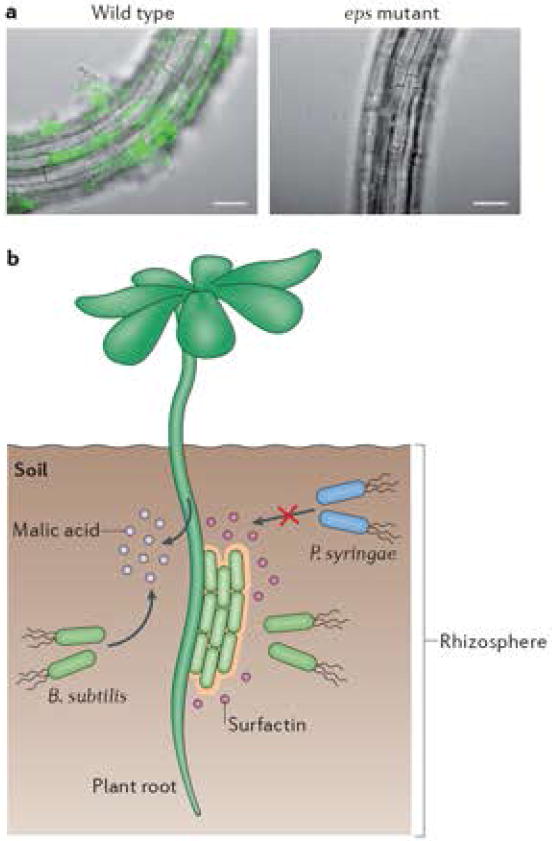Figure.

A) Wild-type B. subtlis cells or an eps mutant constitutively expressing YFP were inoculated with 6 day-old seedlings of A. thaliana. Colonization of the root was observed after 24h. Overlays of fluorescence (false-coloured green) and transmitted light images (gray) are shown. Bars are 50 μm. Images in A) by P. Beauregard (unpublished). B) Schematic illustration of B. subtilis colonizing a plant root. B. subtilis secretes the lipopetide surfactin, which is required for B. subtilis (green rods) biofilm formation on the root. A second trigger for B. subtilis matrix gene expression is malic acid, which is constitutively secreted in the rhizosphere by tomato plants but secreted by A. thaliana only when the plant is infected with the pathogen P. syringae. B. subtilis exerts beneficial effects on the plant by promoting its growth and helping to fight of pathogens (such as P. syringae), directly via the secretion of surfactin and other antimicrobials and indirectly by eliciting induced systemic resistance in the plant.
